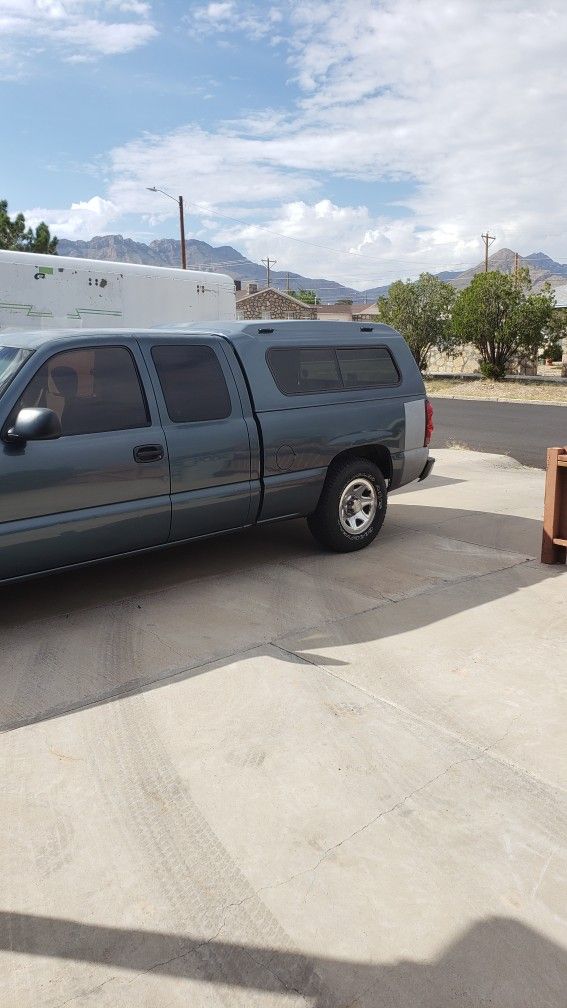Silverado Camper Shell Size: The Definitive Guide to Perfect Fitment
Silverado Camper Shell Size: The Definitive Guide to Perfect Fitment cars.truckstrend.com
The Chevrolet Silverado, a titan in the pickup truck world, is renowned for its durability, power, and versatility. For many owners, enhancing this versatility means adding a camper shell – also known as a truck cap or topper. A camper shell transforms your open truck bed into a secure, weather-protected storage area, a cozy sleeping space, or a specialized mobile workshop. However, the success and satisfaction derived from a camper shell hinge almost entirely on one critical factor: its size.
Understanding Silverado Camper Shell Size isn’t just about aesthetics; it’s fundamental to functionality, safety, and even legal compliance. A mismatched shell can lead to gaps that let in water and dust, an unstable fit that compromises safety, or simply an awkward appearance that diminishes your truck’s appeal. This comprehensive guide will delve into every aspect of Silverado camper shell sizing, providing you with the knowledge and tools to make an informed decision and achieve the perfect fit for your truck.
Silverado Camper Shell Size: The Definitive Guide to Perfect Fitment
The Crucial Importance of Accurate Sizing
Why is precise sizing so paramount when selecting a camper shell for your Silverado?
- Optimal Protection: A perfectly sized shell creates a tight seal with your truck bed, effectively protecting contents from rain, snow, dust, and theft. Gaps, even small ones, compromise this protection.
- Enhanced Aesthetics: A shell designed to match your Silverado’s cab height, body lines, and bed dimensions looks integrated and purposeful, enhancing the truck’s overall appearance. A poorly fitting shell, on the other hand, can look out of place and detract from your vehicle’s aesthetic.
- Structural Integrity and Safety: A correctly sized and installed shell distributes weight evenly across the bed rails and sits securely, preventing shifting during transit. An ill-fitting shell can create unsafe conditions, potentially detaching or causing damage to your truck’s bed.
- Maximizing Utility: The right size ensures you have the intended amount of usable space inside. Whether you’re camping, hauling tools, or transporting gear, the internal dimensions must align with your needs.
- Resale Value: A well-maintained truck with a perfectly fitted, high-quality camper shell can command a better resale value.
How to Precisely Measure Your Silverado Truck Bed
Before you even begin to browse for camper shells, the first and most critical step is to accurately measure your Silverado’s truck bed. Do not rely solely on generalized terms like "short bed" or "standard bed," as these can vary slightly between generations and even specific models.

Here’s a step-by-step guide to measuring your Silverado bed:
- Clear the Bed: Remove any obstructions, bed liners (if they significantly alter dimensions), or cargo from the truck bed.
- Measure Bed Length:
- Use a sturdy tape measure.
- Measure from the inside of the bulkhead (the wall closest to the cab) to the inside of the tailgate (when closed).
- Measure at the top of the bed rails.
- Take the measurement in inches, and if possible, convert to feet and inches for clarity (e.g., 68 inches = 5 feet 8 inches).
- Measure Bed Width (at Bulkhead):
- Measure the inside width of the bed from rail to rail at the bulkhead (front of the bed).
- Measure Bed Width (at Tailgate):
- Measure the inside width of the bed from rail to rail at the tailgate end.
- Note: While most shells are designed for consistent bed widths, confirming both ends is good practice.
- Measure Bed Rail Height:
- Measure from the top of the bed rail down to the floor of the truck bed. This helps confirm the depth and how the shell will sit relative to the bed floor.
- Verify Cab Style: Note your Silverado’s cab style: Regular Cab, Extended Cab (Double Cab), or Crew Cab. This often dictates the bed lengths available for your specific truck.
- Identify Year and Generation: The exact year and generation of your Silverado are crucial, as bed dimensions and body lines can change significantly between generations.
Actionable Insight: Write down all your measurements and your truck’s full details (Year, Make, Model, Cab Style, Bed Length in feet/inches) before contacting any camper shell dealer or manufacturer.
Silverado Bed Lengths by Generation and Cab Style
Chevrolet Silverados have been produced in several generations, each with potentially distinct bed dimensions and styling. While exact measurements can vary by an inch or two due to manufacturing tolerances or aftermarket bed caps, here are the most common bed lengths you’ll encounter:
- Short Bed (or "Short Box"):
- Typically around 5 feet 8 inches (68-69 inches).
- Most commonly found on Crew Cab Silverados, and sometimes on Extended Cab models.
- Standard Bed (or "Standard Box"):
- Often around 6 feet 6 inches (78-79 inches).
- A very common size, found on Extended Cab and Regular Cab Silverados.
- Long Bed (or "Long Box"):
- Generally around 8 feet (96-98 inches).
- Primarily found on Regular Cab Silverados, often used for commercial or heavy-duty applications.
Generation-Specific Notes:
- GMT800 (1999-2007 Classic): Common bed lengths included 5’8", 6’6", and 8′.
- GMT900 (2007-2013): Continued with similar bed lengths: 5’8" (Crew Cab), 6’6" (Extended Cab, Regular Cab), 8′ (Regular Cab).
- K2XX (2014-2018): Maintained the 5’8", 6’6", and 8′ configurations.
- T1XX (2019-Present): Still offers the three primary lengths, though specific cab/bed pairings might vary slightly (e.g., some Crew Cabs might offer the 6’6" bed).
Important: Even within the same "short bed" category, a 2005 Silverado short bed might have slightly different dimensions or body lines than a 2019 Silverado short bed. This is why knowing your truck’s specific year and measuring is paramount.
Types of Camper Shells and Sizing Considerations
Beyond just length and width, the type of camper shell you choose also has sizing implications related to height and design:
- Cab-High Shells: Designed to match the height of your Silverado’s cab. This offers a sleek, integrated look and minimal aerodynamic impact. Sizing is critical to ensure the top of the shell aligns perfectly with the top of your cab.
- High-Rise Shells: Taller than the cab, offering maximum internal cargo volume. While the length and width must still match the bed, the increased height provides more headroom for camping or vertical storage.
- Wedge/Sport Shells: Tapered designs that are lower at the front (cab end) and higher at the rear (tailgate end). These offer a sporty look and a compromise between cab-high and high-rise utility. Sizing involves ensuring the base dimensions fit and the rise provides desired clearance.
- Commercial/Work Shells: Often made of aluminum or heavy-duty fiberglass, these are built for rugged use and frequently feature side access doors or toolboxes. Their sizing focuses on robust fitment and practical access.
Important Considerations Beyond Basic Dimensions
While bed length, width, and height are fundamental, several other factors influence the perfect fit:
- Cab Style & Body Lines: A shell designed for a Crew Cab Silverado will have slightly different front bulkhead contours than one for a Regular Cab, even if the bed length is identical. Modern shells are often molded to match the specific curves and body lines of your truck’s year and model, ensuring a seamless aesthetic.
- Tailgate Design: Newer Silverados may have different tailgate designs (e.g., Multi-Flex tailgate). While most shells accommodate standard tailgates, it’s worth confirming compatibility if you have a specialized tailgate.
- Bed Caps/Rail Protectors: If your Silverado has aftermarket bed rail caps or a thick drop-in bed liner, these can slightly alter the internal dimensions or the surface where the shell sits. Always measure with these in place if you intend to keep them.
- Lighting and Wiring: While not strictly a "size" issue, ensuring the shell’s brake light and interior lights can be wired into your Silverado’s electrical system is a practical consideration.
- Weight Capacity: Consider the weight of the shell itself, plus any cargo you plan to carry inside or on top (e.g., roof racks). Ensure your Silverado’s suspension can handle the added load.
Practical Advice for Choosing the Right Size
- Measure Thrice, Buy Once: Seriously. Re-measure your truck bed several times to ensure accuracy. Even a half-inch can make a difference in fitment and sealing.
- Consult Manufacturer Fitment Guides: Reputable camper shell manufacturers (e.g., ARE, Leer, Snugtop) provide detailed fitment guides on their websites. Input your Silverado’s exact year, make, model, and cab style, and they will tell you which shell models and sizes are compatible.
- Consider Your Primary Use: If you plan to sleep in it, ensure the internal height and length are sufficient for your comfort. If it’s purely for tool storage, security and ease of access might be higher priorities.
- New vs. Used Shells: Buying used can save money, but it increases the risk of a mismatch. Be extra diligent with measurements if buying used, and ideally, test-fit the shell on your truck before purchasing. Remember that a used shell from a Silverado of the same bed length but a different generation might not fit due to subtle changes in body lines or bed rail design.
- Professional Installation: Even with the perfect size, professional installation ensures proper sealing, clamping, and wiring, maximizing the shell’s benefits and lifespan.
Challenges and Solutions for Mismatched Sizes
Despite careful planning, challenges can arise:
- Challenge: Shell is too long or too short.
- Solution: A shell that’s too long will hang over the tailgate, preventing it from closing properly or creating a dangerous overhang. A shell that’s too short will leave a significant gap at the tailgate. Neither is acceptable. The only real solution is to acquire a shell of the correct length. Customization for length is generally not feasible or cost-effective.
- Challenge: Shell is too wide or too narrow.
- Solution: Too wide, and it won’t sit properly on the bed rails, potentially causing stress or damage. Too narrow, and it will leave gaps, compromising weather sealing. Again, a replacement with the correct width is the solution. Minor discrepancies might be mitigated with extra weather stripping, but this is a temporary fix at best.
- Challenge: Shell from a different generation has incorrect body lines.
- Solution: Even if the length and width are close, an older shell on a newer truck (or vice-versa) might look awkward due to mismatched curves or gaps where it meets the cab. This is an aesthetic issue that’s hard to fix. Prioritize shells designed specifically for your Silverado’s generation.
Silverado Camper Shell Estimated Price Ranges
Camper shell prices vary significantly based on brand, material (aluminum vs. fiberglass), features (windows, vents, interior lights, carpeted headliner, roof racks), and whether it’s new or used. The size itself (e.g., 5.5 ft vs. 8 ft) has a minor impact on price, primarily due to the amount of material used. The primary cost drivers are features and brand.
Here’s a representative table of estimated price ranges for common Silverado camper shells:
| Shell Type / Material | Common Silverado Bed Lengths | Estimated Price Range (New) | Estimated Price Range (Used) |
|---|---|---|---|
| Aluminum (Basic) | 5’8", 6’6", 8′ | $1,000 – $2,000 | $300 – $800 |
| Fiberglass (Cab-High) | 5’8", 6’6", 8′ | $2,000 – $3,500 | $700 – $1,500 |
| Fiberglass (High-Rise) | 5’8", 6’6", 8′ | $2,500 – $4,000 | $800 – $1,800 |
| Fiberglass (Wedge/Sport) | 5’8", 6’6" | $2,800 – $4,500 | $1,000 – $2,000 |
| Commercial/Heavy Duty | 6’6", 8′ | $3,000 – $5,500+ | $1,200 – $2,500+ |
Note: These prices are estimates and can vary greatly by manufacturer, specific features, region, and market conditions. Installation costs are often separate and can range from $100-$300.
Frequently Asked Questions (FAQ) about Silverado Camper Shell Size
Q1: Can I put a short bed camper shell on a standard bed Silverado?
A1: No, not properly. A short bed shell is significantly shorter than a standard bed. It would leave a large gap at the tailgate and not seal correctly, compromising protection and safety.
Q2: Do all Silverado "short beds" have the exact same length?
A2: While generally consistent within a specific generation (e.g., all 2015 Silverado short beds are the same), there can be minor variations (an inch or two) between different generations. Always measure your specific truck.
Q3: How do I find out my Silverado’s exact bed length without measuring?
A3: The most reliable way is to measure it yourself. You can also check your truck’s original window sticker, owner’s manual, or a VIN decoder, but physical measurement is always recommended for camper shell fitment.
Q4: Does my Silverado’s cab style (Regular, Extended, Crew) affect the bed length I can get?
A4: Yes, indirectly. While the bed itself has a fixed length, certain cab styles are typically paired with specific bed lengths from the factory. For example, Crew Cab Silverados are most commonly found with the 5’8" short bed, while Regular Cabs often have the 8′ long bed.
Q5: What if my Silverado has a spray-in or drop-in bed liner? Does that affect the shell size?
A5: A spray-in liner generally does not affect the external dimensions needed for a shell. A thick drop-in liner might slightly reduce the internal width or height, but shells are usually designed to accommodate them. Always measure with the liner in place if you intend to keep it.
Q6: Are camper shells universal? Can I use a shell from a Ford F-150 on my Silverado?
A6: Absolutely not. Camper shells are highly truck-specific. They are designed to match the exact bed dimensions, rail profiles, and body lines of a particular make, model, and often, generation of truck. A shell from another brand or even a different model year of Silverado will likely not fit properly.
Conclusion
Choosing the correct Silverado camper shell size is the cornerstone of a successful and satisfying purchase. It’s not just about finding "a" shell, but finding "the" shell that perfectly integrates with your truck, providing optimal protection, enhancing its utility, and complementing its aesthetics. By meticulously measuring your truck bed, understanding the common Silverado bed lengths, considering the various shell types, and paying attention to crucial details like your truck’s year and cab style, you can navigate the options with confidence. Invest the time in research and precise measurement, and you’ll transform your Silverado into an even more capable and versatile vehicle, ready for any adventure or task.






